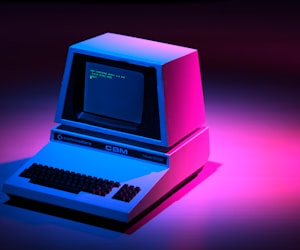How fast should my Internet connection be for streaming TV services?
This question was answered on February 6, 2020. Much of the information contained herein may have changed since posting.

With so many options for streaming TV, making sure your network is up to the task is the only way to avoid the dreaded ‘buffering’ of your shows.
While there’s no such thing as too much speed, there’s no reason to pay for more than you actually need.
Your Internet service provider has a vested interest in guiding you to the highest speeds they can, so I would not suggest relying solely on their recommendation.
Variables Matter
There are variables that have to be taken into consideration in order to accurately estimate how much speed your household will need.
It starts with the number of devices you’ll have connected and what each of those devices will be doing. For instance, smart home devices such as doorbells and thermostats use very little data, while streaming audio or TV devices and video chat will require faster data speeds.
The number of people in your home requiring simultaneous access of high demand devices will be another important factor.
A great online resource for considering all of these variables is located at HighSpeedInternet.com (http://bit.ly/31xaGM0).
2.4 vs 5 GHz
Unless you’re using a really old wireless router, you’ll have two different Wi-Fi connections available on your network.
The primary difference is that 2.4 GHz has a larger coverage area and can penetrate physical barriers better but is slower in speed. This lower frequency is also more congested as lots of common household devices like garage door openers, baby monitors and cordless phones also use it.
5 GHz gives you faster connection speeds and has less congestion, but has a tougher time with physical barriers so you’ll get a smaller coverage area.
Another consideration is whether the device you are connecting even has the need for a faster connection. Those that don’t should be connected to the 2.4 GHz network.
The reality for both frequencies in most households is that they are much faster than your actual Internet connection, which is why the congestion and location variables are much more important.
Wired is Better Than Wireless
When possible, using an Ethernet connection instead of Wi-Fi to connect your streaming devices will give you the best possible speeds and avoid the pitfalls of a wireless connection.
Many of the newer 4K-ready streaming devices from Apple, Roku, Google and Amazon offer an option to directly connect to your router via an Ethernet port or adapter.
QoS Settings
An additional tweak you can make to your network is through the Quality of Service settings in your router.
This allows you to assign priority levels for the different devices or types of data packets being handled by the router. Think of it as the HOV lane on the Information Superhighway, which you want your streaming devices to use.
The options vary widely based on the brand and model of router you have, so the best way to get specific instructions is to do a Google search for ‘QoS settings for (brand) (model) router’.
About the author
 Ken Colburn of Data Doctors on February 6, 2020
Ken Colburn of Data Doctors on February 6, 2020
Need Help with this Issue?
We help people with technology! It's what we do.
Contact or Schedule an Appointment with a location for help!

